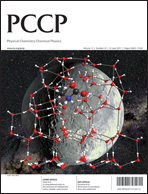Paracyclophanes as model compounds for strongly interacting π-systems. Part 2: mono-hydroxy[2.2]paracyclophane†
Abstract
The structure of the electronic ground- and first excited state of mono-hydroxy [2.2]paracyclophane (MHPC) and the S1 ← S0 electronic transition have been investigated by resonance-enhanced multiphoton ionisation (
![Graphical abstract: Paracyclophanes as model compounds for strongly interacting π-systems. Part 2: mono-hydroxy[2.2]paracyclophane](/en/Image/Get?imageInfo.ImageType=GA&imageInfo.ImageIdentifier.ManuscriptID=C0CP02841J&imageInfo.ImageIdentifier.Year=2011)

 Please wait while we load your content...
Please wait while we load your content...